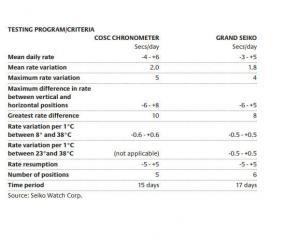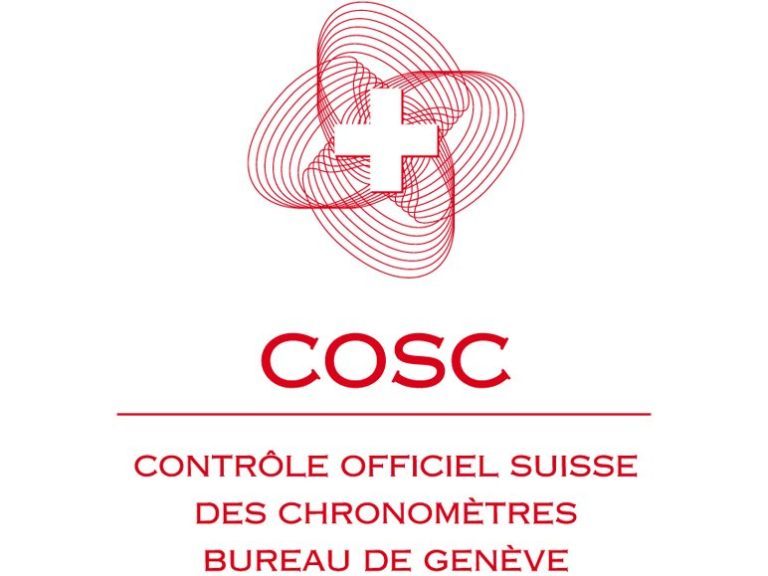Standard Procedures: Seiko vs. COSC
How does Seiko’s Grand Seiko Inspection Standard differ from the COSC tests required for a Swiss mechanical chronometer? In three ways, Seiko says. “The Grand Seiko standard involves more tests in more positions and at more temperatures than today’s chronometer standard,” Seiko says in a statement.
Here are the differences:
1. Seiko tests its Grand Seiko movements in six positions versus five for COSC. Both Seiko and COSC check the accuracy, or rate, of the movement in various positions simulating the various angles a watch is in when on the wrist. Seiko, however, adds one additional position: the position of the watch when it is not being worn and placed vertically on a flat surface, crown right, with 12 o’clock at the top.
2. Seiko tests Grand Seiko movements with two temperature variations versus COSC’s one. Changes in temperature can affect the performance of a watch. COSC checks the thermal variation of daily rate between 8 and 38 degrees Celsius and requires that the rate variation not exceed +/- 0.6 seconds per day. Like COSC, Seiko checks thermal variation between 8 and 38 degrees Celsius. But Seiko conducts a second test for variations between 23 and 38 degrees Celsius. The extra temperature rating is closer to body temperature. Seiko has a slightly tougher standard than COSC, +/- 0.5 seconds per day.
3. Seiko tests Grand Seiko movements for 17 days versus COSC’s 15. The two extra days are for the test of the movement in the sixth position.
The Grand Seiko standard has been revised several times over the years. The current standard was set in 1998, when Seiko revived the mechanical Grand Seiko collection with the Caliber 9S family of movements.
The following table outlines the differences between the COSC and Grand Seiko standards.







